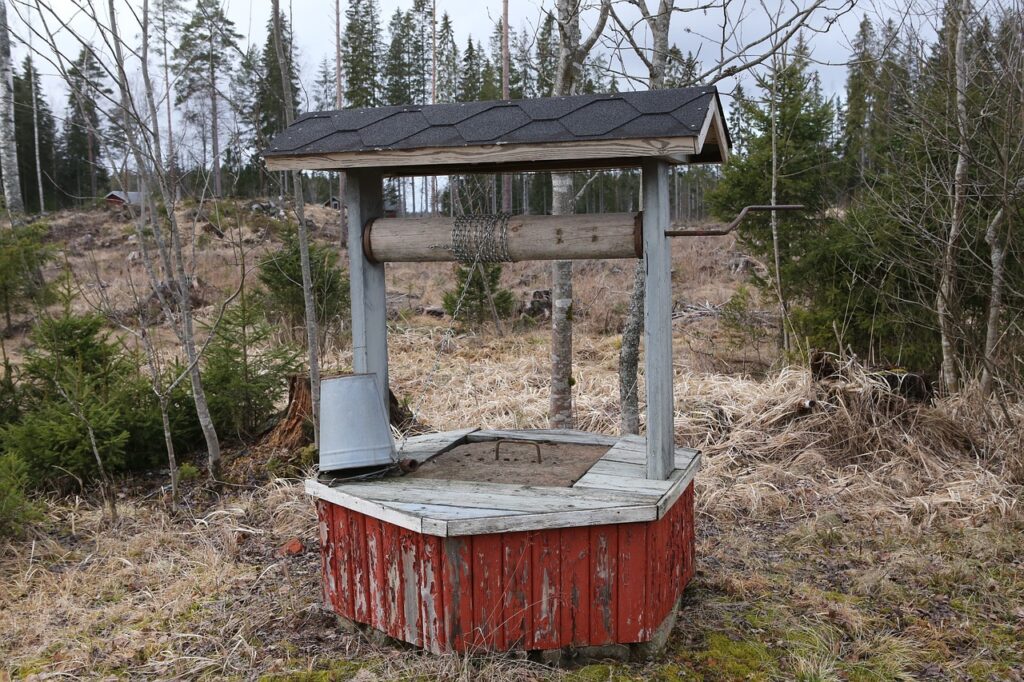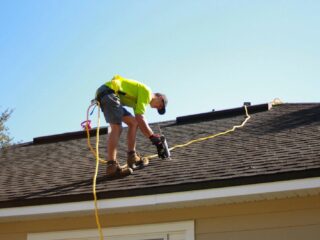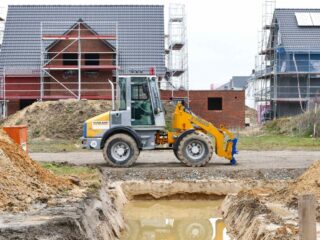
When Mark’s well started producing less water after 18 years of reliable service, he faced a dilemma thousands of homeowners encounter every year. His contractor presented two options: spend $6,000 on hydrofracturing rehabilitation with uncertain results, or invest $15,000 in a completely new well. With his family depending on reliable water and his budget stretched thin, Mark needed to make the right choice the first time.
If you’re facing declining well performance, you’re likely asking the same question: rehabilitation or replacement? The wrong decision can mean thousands in wasted money or continued water problems. Understanding the key factors that determine success can help you make an informed choice that protects both your water supply and your wallet.
Understanding Low-Yield Wells
A low-yield well typically produces less than 5 gallons per minute (GPM), though household needs vary. Wells producing 3-4 GPM might suffice for a small household with efficient fixtures, while larger families may need 6-8 GPM or more for comfortable living.
Low yield can result from several causes. Natural aquifer depletion occurs as surrounding development increases demand on the same water source. Over-pumping damage, as discussed in previous articles, can permanently reduce well capacity through perforation plugging, mineral incrustation, and biofouling. Normal aging also affects well performance as casings deteriorate and screens become less efficient over time.
Seasonal changes compound these issues. Wells that perform adequately during wet seasons may fail during dry periods when water tables drop. Problems typically surface gradually, making it tempting to delay action. However, waiting often makes both rehabilitation and replacement more expensive and complicated.
Well Rehabilitation: Options and Realities
Well rehabilitation encompasses several approaches designed to restore performance to existing wells. The most basic involves thorough cleaning and disinfection to remove bacterial buildup and mineral deposits. Pump replacement and optimization can improve efficiency, especially if the original pump was oversized or poorly matched to well capacity.
More intensive rehabilitation includes screen cleaning or replacement and casing repair. These methods work best when the well structure remains sound but has been compromised by buildup or minor damage.
Hydrofracturing represents the most aggressive rehabilitation approach. This process uses high water pressure to clear blockages and fracture bedrock to improve water flow. Costs typically range from $3,000 to $8,000, depending on well depth and local conditions.
However, hydrofracturing has significant limitations. It only works effectively with bedrock wells, requires permits in many areas, and can affect neighboring wells. Success rates vary widely, and there’s no guarantee of improvement. The process can cause temporary water quality issues and isn’t environmentally friendly. Perhaps most importantly, hydrofracturing addresses symptoms rather than underlying aquifer problems.
Other rehabilitation methods include chemical treatments for mineral buildup and mechanical cleaning techniques. While less expensive than hydrofracturing, these approaches are also less likely to produce dramatic improvements in severely compromised wells.
Well Replacement: The Complete Solution
Well replacement involves drilling a new well, typically in a different location on the property. This option becomes necessary when structural damage, contamination, or complete local aquifer depletion makes rehabilitation ineffective.
The replacement process begins with site assessment and permitting, followed by drilling and installation. Modern wells benefit from improved drilling techniques, better materials, and enhanced pump technology. Water quality testing ensures the new well meets all safety standards.
Costs vary significantly based on depth, geology, and site access. Drilling costs typically range from $15-50 per foot, with total project costs commonly falling between $8,000-20,000. Deep wells in challenging geology can cost significantly more.
The primary advantage of replacement is certainty. A properly installed new well should provide decades of reliable service with modern efficiency and warranty protection. You’re starting fresh with current technology and materials designed to last.
Decision Framework: Choosing Your Path
Age represents the most important factor in this decision. Wells under 15 years old are often good candidates for rehabilitation, especially if problems stem from maintenance issues or pump problems rather than structural deterioration. The well casing and screen should still be in good condition, making rehabilitation efforts more likely to succeed.
Wells 15-25 years old require case-by-case evaluation. Success depends heavily on the original installation quality, maintenance history, and specific problems identified. Professional assessment becomes crucial in this age range.
Wells over 25 years old often represent better candidates for replacement. While rehabilitation might provide temporary improvement, the underlying infrastructure is likely nearing end-of-life regardless of current problems.
Cost-benefit analysis requires honest evaluation of expected outcomes. Rehabilitation costing $5,000 that extends well life by 5-7 years may make sense for a 15-year-old well but poor value for a 25-year-old system. Replacement costs spread over 20-30 years of service life often provide better long-term value.
Professional evaluation should assess structural integrity, water quality trends, and historical performance data. Multiple opinions help ensure you’re getting objective advice rather than sales pressure toward the most profitable option for the contractor.
Smart Technology as a Third Option
Before committing to rehabilitation or replacement, consider modern well management technology. Automated systems can often extend existing well life while providing reliable water supply without the expense and uncertainty of major construction.
Companies like Epp Well Solutions have developed systems that prevent over-pumping damage while optimizing water harvest and storage. These systems work by respecting the well’s natural recovery rate, harvesting available water during low-demand periods and storing it for peak usage times.
The Well Harvester technology, for example, can automatically manage water extraction to prevent the perforation plugging, mineral incrustation, and biofouling that commonly reduce well capacity over time. By maintaining proper water levels and controlled pumping rates, these systems can often restore functional capacity to wells showing early decline.
Cost-wise, automated well management systems typically fall between rehabilitation and replacement costs while providing more predictable results than rehabilitation and extending the useful life of existing infrastructure. This approach works particularly well for wells in the 10-20 year age range showing early signs of decline.
Making the Financial Decision
Total cost of ownership extends beyond initial installation. New wells offer better energy efficiency through modern pump technology and proper sizing. Rehabilitation may improve performance but rarely achieves the efficiency of properly designed new systems.
Maintenance requirements also differ significantly. Rehabilitated wells often need more frequent attention, especially if underlying issues weren’t fully resolved. New wells typically require minimal maintenance for the first 10-15 years.
Warranty protection provides additional value consideration. New wells come with comprehensive warranties on equipment and installation. Rehabilitation work may carry limited warranties that don’t cover the well structure itself.
Property value impact shouldn’t be overlooked. A new, properly documented well represents a selling point, while a recently rehabilitated well may raise questions about underlying problems.
Professional Guidance and Next Steps
Professional evaluation becomes essential regardless of which direction you’re leaning. Comprehensive well testing should include flow rate analysis, water level measurements, and structural assessment. Water quality testing helps identify any contamination issues that might influence your decision.
Seek multiple opinions, especially for expensive rehabilitation procedures. Be wary of contractors who pressure immediate decisions or guarantee specific results from uncertain procedures like hydrofracturing.
Document everything throughout the decision process. Well records become valuable for future maintenance, resale, and insurance purposes. They also help establish patterns that might influence warranty coverage.
Consider seasonal timing in your planning. Well problems often worsen during dry seasons, but construction may be easier during favorable weather. Emergency situations limit options and increase costs.
Making the Right Choice
The rehabilitation versus replacement decision ultimately depends on well age, condition assessment, cost-benefit analysis, and your risk tolerance. Wells under 15 years with specific, identifiable problems often benefit from targeted rehabilitation. Wells over 25 years usually represent better candidates for replacement despite higher upfront costs.
Smart technology offers a middle path that can extend well life while providing reliable water supply. This option works particularly well for wells showing early decline but not yet requiring major intervention.
Don’t delay action when problems appear. Early intervention provides more options and better outcomes regardless of which path you choose. Professional evaluation helps ensure you’re making decisions based on facts rather than assumptions.
Your well represents a critical infrastructure investment deserving careful consideration. By understanding the options, costs, and likely outcomes, you can make an informed decision that provides reliable water service for years to come while protecting your financial investment.












